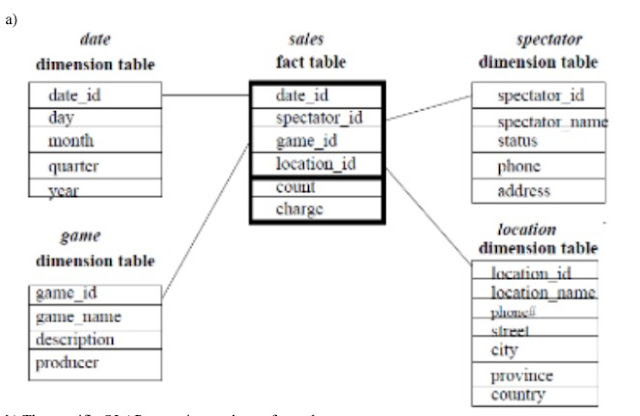Explain E-Governance Project life cycle.
E-Governance Project Lifecycle
The diagram below presents an overview of the Lifecycle of an e-Governance project followed by a list of key activities performed at the phase of the Lifecycle.
E-Governance detailed key activities and deliverables are given:-
Phase 1: e-Governance Strategy Development
The table below lists key activities performed in e-Governance Strategy Development phase and illustrative deliverables.
Key Activities
• Needs Assessment
• Define clear vision & objectives
• Prioritization of services and projects
• Incorporate domestic and global learning’s
• Identify institutional structures & capacities for implementation
• Define funding requirements
• Define monitoring and evaluation approach…
Deliverable
• e-Governance vision
• e-Governance Objectives
• e-Governance Strategy
Phase 2: Current State Assessment
The key activities performed in the Current State Assessment phase and illustrative deliverables are given below:-
Key Activities
To perform an in-depth assessment of business functions and services identified for
coverage under e-Governance project to understand:
• current approach for performing the business functions and service delivery
• the key challenges and to identify improvement areas
• stakeholder needs and expectations
• good practices and learnings from similar implementations in similar domains
• current systems (IT) implemented in the department, coverage, and gaps
• organization structures and people capacities etc
Deliverables
• Process maps
• Pain points
• Initial improvement areas
• Stakeholder needs
• IT Systems
• Scope and functionality
• Strengths and gaps
• IT Infrastructure (network, security, data center)...
• Organizational structures
• Roles and responsibilities
• Capacities and skillsets
• Change barriers...
Phase 3: Define Future State (To-be definition)
The table below lists key activities performed in the Future State Assessment phase and illustrative deliverables.
Key Activities
• To define how the identified business functions and services shall be performed going forward
• To define the new business processes
• To define IT solutions and services for automation of new business processes
• To define people change management, capacity building, and communication requirements for project implementation
Deliverables
• To-be business processes
• New process KPIs/metrics
• Changes to the legal and policy environment
• Functional Architecture and Requirements specifications
• Enterprise Architecture covering Application, data, network, security, data center architecture
• Data digitization and migration strategy
• SLAs
• Institutional structures needed for project implementation
• Training and Capacity building plan
• Change Management Plan
• Communications Management Plan
Phase 4: Implementation approach and sourcing
Key Activities
• Development of Implementation Approach and Plan
• Development of Business Model
• RFP Development
• Vendor Evaluation and Selection
Deliverables
• Implementation Approach and Plan
• Implementation timelines
• Identification of key stakeholders and their roles and responsibilities
• Monitoring and Evaluation (M & E) Plan
• Project investments and costs
• Business/implementation model
• Payment terms
• SLAs
• Procurement approach
• Request for Proposals (RFP)
• Contract Documents/Agreements
• Pre-bid minutes and clarifications
• Vendor evaluation reports
• Vendor (s) identification
• Signed contract documents
Phase 5: Develop and Implement IT System
Key Activities
• Application Software Development
• IT Infrastructure Creation
• Third Party Acceptance Testing
• Training and Capacity Building
Deliverables
• e-Governance Solution/Software
• IT Infrastructure
Phase 6: Operate and Sustain
Key Activities
• IT Systems Operations and Maintenance
• Monitoring and Evaluation
Project Management Office/Unit
Key Activities
• Definition of Programme and Project implementation plans
• Identification of stakeholders and key responsibilities
• Identification of external support needed from the market (consultancy services, software development, IT infra creation, change management…)
• Definition of the scope of work for the vendors
• RFP Preparation and vendor selection
• Monitoring project implementation plans
• Scope change management
• Risk assessment and management
• Issue Management
• Services/Systems quality assurance
• SLA Monitoring
• Project financial management
• Change Management and Communications
• Training and Capacity building
• Monitoring and Evaluation of project objectives and benefits….
Change Management and Communications
Key Activities
Change Management
• Understand the changes lead by the project (policy, processes, systems..)
• Identify the impacted stakeholders
• Assess the readiness of stakeholders to adopt change
• Identity key risks surrounding resistance to change
• Devise measures to address the identified risks
• Develop a change management strategy
• Implement strategy
• Monitoring and corrective actions
Project Communications
• Understand the project scope and coverage
• Identify the objectives, benefits
• Identify the stakeholder groups impacted by the project
• Identify the communication needs for each stakeholder group
• Identify the communication channels
• Development communications management strategy
• Implement strategy
• Monitoring and corrective actions
Capacity Building
• Understand the changes lead by the project (policy, processes, systems..)
• Identify the impacted stakeholders
• Understand the skill sets needed to adopt the new systems and processes
• Assess the current skill sets and capacities in the organization
• Identify the training needs to bridge the gaps in the skill set…
• Identify the training courses and approach for training
• Implement Training Plan





Comments
Post a Comment